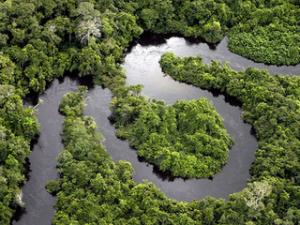 Tropical forests that have regrown after deforestation are proving more significant havens of biodiversity than previously thought, scientists said last week.
Tropical forests that have regrown after deforestation are proving more significant havens of biodiversity than previously thought, scientists said last week.
A meeting convened to highlight the controversy about tropical rainforest “comeback” heard that secondary regrowth of forests is widespread and is leading to areas rich in plant and animal life that can play an important role in conservation efforts in the tropics.
Robin Chazdon, from the University of Connecticut, told the meeting that many species considered to be old-growth forest specialists are in fact doing well in secondary forests, at least in small proportions.
In Costa Rica she has found that 176 species (59 per cent) of old-growth tree species were present in second-growth forests. Of 123 species expected to survive only in mature forest, some 94 occur as small stems in second-growth forests.
Chazdon also said that a good level of biodiversity can be found in human-modified landscapes such as remnant trees, plantations, living fences and agroforests. It is in the latter where Chazdon sees the greatest opportunity for providing sufficient complexity to meet the species’ needs.
“Agroforestry can provide a high structural forest complexity and can play a significant role in protecting species outside of formal reserves,” she said. This is despite the fact that these species may not be the same ones, or appear in the same richness, as can be found in an intact forest, she added.
But William Laurance, of the Smithsonian Tropical Research Institute in Panama, said that, though the work was good, Chazdon operates “mainly in Costa Rica where the situation is pretty positive”.
In places like Brazil, regrowth is often burned and re-cleared before it has a chance to become very old, so I think that limits its value for tropical species,” he told SciDev.Net.
At the meeting he highlighted concerns that regrowth is mainly useful for smaller species rather than birds and mammals.
Dr Laurance also argued that forest regrowth, attributed largely to urban migration, may be swamped by other factors such as the rise in industrial forms of land use, the liberalisation of agricultural trade and the demand for biofuels.
These activities vary with the demands of international markets, not the size of the local population.
The meeting was hosted by the Smithsonian’s National Museum of Natural History in Washington DC.
Article courtesy of ScDev.net



















